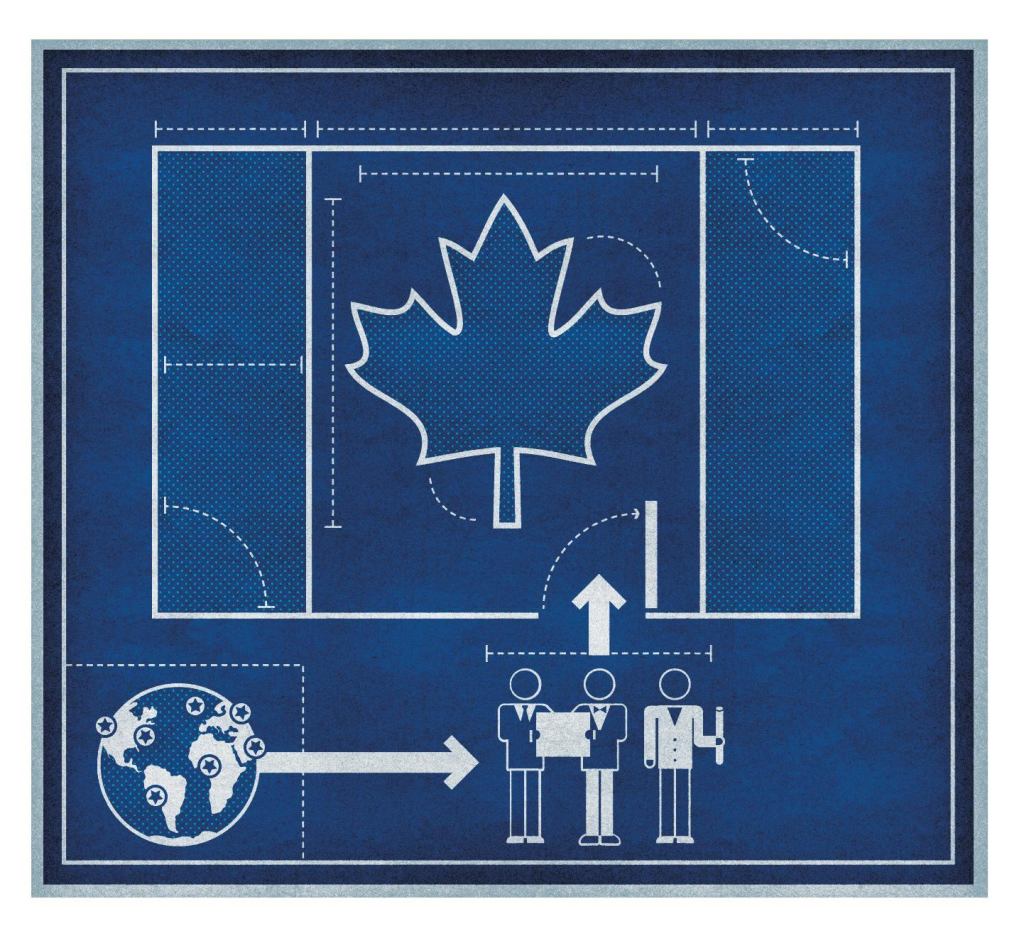“I’ve been telling people, ‘If you want to work, try Edmonton,’” says Lenore Lucey, CEO of the National Council of Architectural Registration Boards (NCARB), which represents the licensing authorities of the 50 U.S. states as well as Washington, D.C.; Puerto Rico; Guam; and the U.S. Virgin Islands.
That may be a surprising piece of advice, coming from the head of NCARB. But it isn’t given lightly. “During this recession,” Lucey says, “while most U.S. firms have been laying off people, our Canadian colleagues have been looking to hire.” One possible reason: The Canadian housing market is still red hot. Indeed, two Canadian provinces have introduced new taxes meant to slow housing activity, at a time when housing starts in the U.S. have barely risen from their 2008 nadir.
Dave Edwards, a principal of DeLint + Edwards Architects, in Regina, Saskatchewan, says that he has been looking to hire architects with “four or five years’ experience”—jobs, he notes, that pay $60,000 to start—but that “finding people has been a struggle.” (The Canadian dollar is nearly equivalent to the U.S. dollar.)
And the situation is expected to get worse. Bing Thom, principal of Vancouver, British Columbia’s Bing Thom Architects, says, “Like many countries, Canada has an aging population. And we’re not graduating enough architects to replace the ones that are going to be retiring. Long term, we know we’re going to have quite a shortfall.” Currently, there are about 9,000 architects in Canada, compared with 105,312 registered architects in the U.S.* (Canada’s population, at close to 35 million, is about a tenth that of the U.S.)
The country’s solution to its architect shortage? Make it easier for foreign-trained architects to work, and live, there. In a move that would be almost impossible to imagine in the recession-battered United States, the Canadian government has provided more than $1.6 million to help the Royal Architectural Institute of Canada and the Canadian Architectural Licensing Authorities (CALA) streamline the process by which foreign architects can qualify to work in Canada.
The move is part of an overall government strategy, called the Pan-Canadian Framework for the Assessment and Recognition of Foreign Qualifications, announced in 2009. Under the framework, credentialing will be streamlined for eight priority occupations—including medicine, nursing, and, yes, architecture.
Foreign-trained architects looking to move to Canada will be advised within one year if they qualify for Canadian licenses. Those who don’t qualify “will be advised of additional requirements or be directed to alternative occupations that would benefit from their skills and experience,” according to a Canadian government press release. The agreement doesn’t affect U.S. architects, who are already covered by reciprocal licensing agreements.
The Canadian program is modeled, in part, on NCARB’s Broadly Experienced Foreign Architect (BEFA) program, which allows foreign architects with at least seven years of experience to become licensed in many U.S. jurisdictions. But NCARB can’t offer architects the right to live in the U.S. That may be one reason, Lucey says, why only 60 foreign architects have applied under the BEFA program since its 2003 inception.
Canada, by contrast, wants professionals to immigrate. And, once they do, they are encouraged to “use to the fullest their skills and experience within the Canadian labour market,” Human Resources and Skills Development Canada, a government agency, says on its website.
Thom, who was born in Hong Kong and has practiced in Vancouver for almost 40 years, applauds the new initiative. He says that two of his best employees are foreigners who were trained at universities that aren’t accredited by Canadian authorities, leaving them in a kind of limbo. Worse, he adds, “We have many qualified [foreign] graduates driving taxis or working in restaurant kitchens. It’s a tremendous waste of talented people.”
Edwards, in Regina, heads the CALA committee developing the new procedures, which he says will take 18 to 24 months to implement. He says that CALA “made an application to the federal government for funding, and they very kindly agreed to help.”
“Whatever we do,” Edwards adds, “has to be fair and equal to everybody, both Canadian architecture grads and foreign architects who come to our shores.”
Asked whether the U.S. would ever do what Canada is doing—make it easier for foreign architects to live and practice in the U.S.—Kermit Baker, the AIA’s chief economist, says, “Given that U.S. architecture firms have shed 25 percent of their positions since the recession began, I would expect that this would not go over well at all in the U.S.”
*Correction, Nov. 30, 2010: The original version of this article misreported the number of licensed architects in the United States. There are 105,312, according to the National Council of Architectural Registration Boards.
